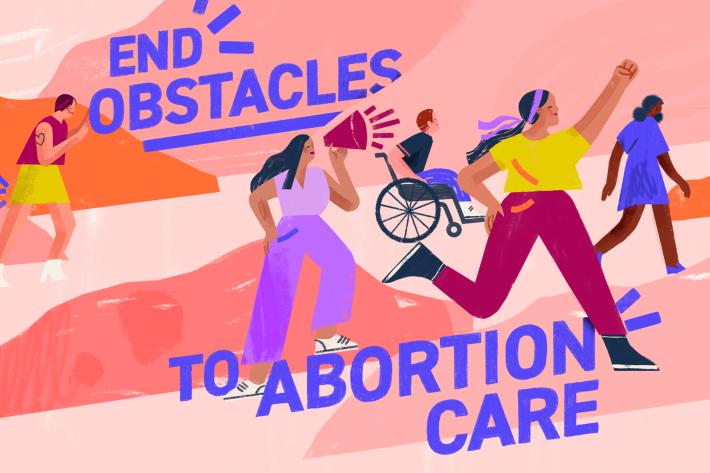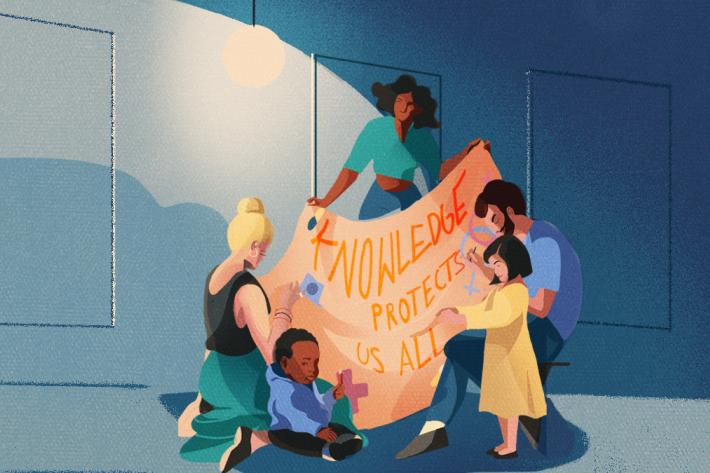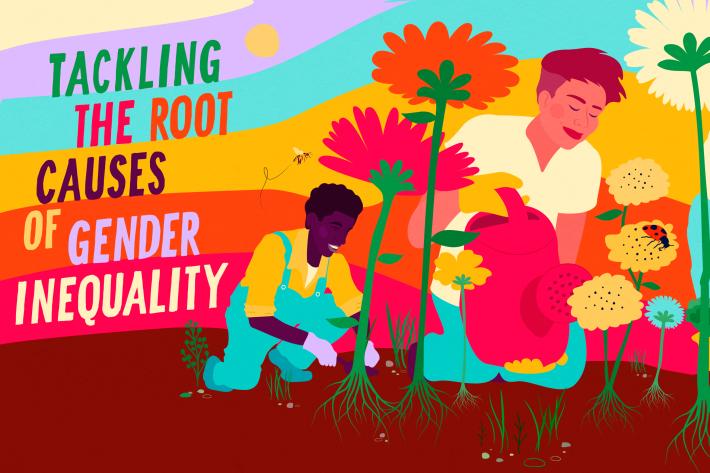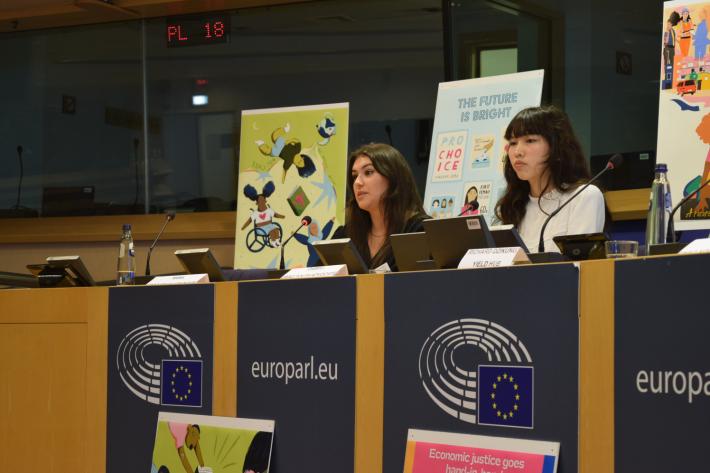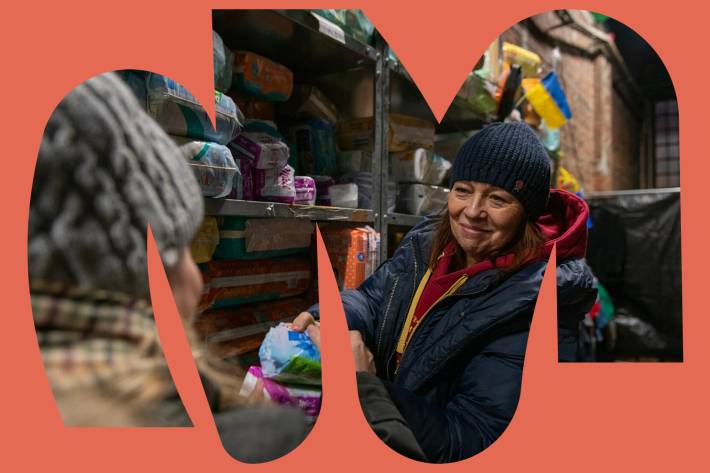Spotlight
A selection of resources from across the Federation
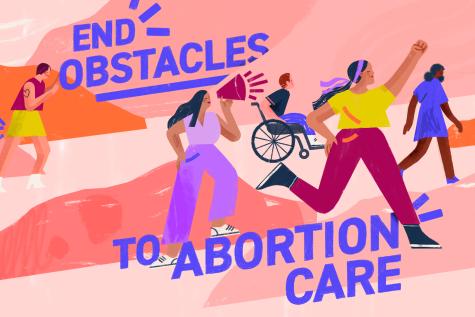
Abortion Care and Costs in Europe and Central Asia
IPPF EN carried out research into the economic burden that women face in accessing abortion care in Europe and Central Asia. This factsheet provides a snapshot of the findings.
Filter our resources by:


| 24 April 2020
Women and girls left without care: a snapshot in time during COVID-19
COVID-19 is endangering the sexual and reproductive health and safety of women and girls and vulnerable people across Europe. They are left without access to essential medical services such as contraception and abortion care, HIV and STI testing and reproductive cancer screenings, and respectful maternal healthcare. The huge reduction in these services is putting lives, health and wellbeing at risk, particularly those of vulnerable groups whose only access may be through subsidised services provided by civil society. Gender-based violence has surged, with lockdown making it harder to provide support and shelter to women desperately in need of it. This report has been compiled by IPPF EN and EPF from surveys that were conducted with their respective stakeholders on the impact of COVID-19 on the sexual and reproductive health and rights of people, particularly women and girls, in Europe, and on Europe’s international cooperation on sexual and reproductive health and rights (SRHR). The content of the report derives from what stakeholders in different countries reported as the situation in their country at the time of reporting – early April - and thus aims to provide an overall ‘snapshot in time’ of what was clearly already a significant effect of the pandemic on SRHR. However, the situation is highly dynamic and evolving daily, so be aware some of the situations reported may already have changed. We will be producing new information as data comes in, but in the meantime, we hope you find this a useful overview of the current context.

| 09 January 2020
The IPPF EN partner survey: Abortion legislation and its implementation in Europe and Central Asia
The Survey looks at the relevant legislation on abortion care in 42 countries, but crucially it also explores how these laws are interpreted by providers and experienced by women and girls. It is designed to provide an overview of women’s and girls’ experience around accessing abortion care, to highlight current threats to their reproductive health and rights, to identify ‘best-fit’ practices and to stimulate further debate and research. The Survey is not a research paper, but rather a synthesis of the expertise and understanding of our Members and Partners working in the field and serving women every day. The report begins by situating abortion care as an essential component of women’s reproductive health, as defined within the broader framework of international human rights law, specifically the Right to the Highest Attainable Standard of Physical and Mental Health. It then examines to what extent current provision within national borders aligns with or deviates from state obligations to care for and value equally women and girls. It covers four key areas: the criminalisation of abortion; the various grounds available to women and girls to access abortion care and the time limits imposed thereon; the additional institutional and procedural hurdles to abortion care; and finally, the significant financial burden inflicted on women and girls when accessing care across the region. For each section, the ‘best’ and ‘worst’ country scenarios have been referenced to highlight how differently a particular barrier to care might be implemented and then experienced by women and girls across Europe and Central Asia.
| 13 October 2016
Sexuality Education and Sustainable Development: Opportunities for EU Development Cooperation
Sexual and reproductive rights are human rights. Education empowers young people and enables them to make their own choices. Comprehensive Sexuality education (CSE) allows young people to make critical choices about their health and future.It seeks to equip young people with the knowledge, life skills, attitudes and positive values they need to understand and enjoy their sexuality – physically and emotionally. This briefing paper presents the ways in which CSE is a key enabler for both social and economic sustainable development.
| 15 July 2016
Annual Report 2015
In 2015, IPPF EN made huge inroads across Europe and Central Asia. From providing life-saving sexual and reproductive health services to refugees in Macedonia to investing in communities to change young people’s lives in Romania, our Member Associations worked passionately to implement ambitious commitments in the field of sexual and reproductive health and rights. Ensuring that governments deliver on sexual and reproductive health and rights and gender equality is central to our members’ work. Last year, our members helped to bring about key policy changes to ensure greater equality and tackle discrimination. For example, In Albania, the Labour law now prohibits discrimination based on gender, gender identity, sexual orientation, pregnancy, or HIV status. The rights of young people are at the heart of our work. In Bulgaria a new law introduced health and sexuality education in schools for the first time, and in France, free contraception can now be provided anonymously to under-18s by a pharmacist. IPPF EN will continue to challenge gender stereotypes and patriarchal social norms to help ensure that young people are able to reach their full potential. To find out more about the work we did last year, click above!

| 07 July 2016
Uluk's story
Uluk's story is about young people, myths and sexuality education in Karakol, Kyrgyzstan.

| 17 June 2016
Financial Statement 2015
IPPF’s total income has fallen by US$10.0 million from US$126.2 million to US$116.2 million. This reduction is due to a fall in unrestricted government income of US$5.8 million, a reduction of restricted government income of US$6.2 million and reduced donations in kind of US$0.6 million offset by an increase in restricted grants from multilaterals of US$4m with the balance of US$0.9 million decrease in other income and trading activities. The total decrease is split between restricted and unrestricted funds by US$2.3 million and US$7.6 million respectively. With the exception of Norway and Japan, all government (more significantly Australia and Sweden) donors have held level or increased their unrestricted funding to IPPF in the donor currency. However the strengthening of the US dollar has had a significant impact, effectively reducing US dollar unrestricted income by approximately 14% on a like for like basis compared to 2014. Total expenditure has decreased from US$137.5 million to US$131.8 million. Unrestricted expenditure has risen from US$84.2 million to US$85.6 million while restricted expenditure has fallen from US$53.3 million to US$46.2 million. The increase in unrestricted expenditure is driven by an exchange loss (US$1.9 million) and the use of US$8.9m designated funds to provide support in a number of areas: support in South Asia for system strengthening (US$2.3m); support for resource mobilization at regional and central level (US$1.5 million); campaign and advocacy for UN Liaison office (US$0.9 million); scale up fund for SGBV support to MAs (US$0.5 million); contingency spend on various activities (US$0.4 million). Restricted expenditure levels are driven by the timing of donor funded programmes, which vary on a year-by-year basis. This has resulted in an unrestricted net operating expenditure of US$13.4 million before other unrecognized gains and losses and a restricted deficit of US$2.1 million, to generate a total operating deficit of US$15.6 million. After taking into account actuarial gain on the defined benefit pension scheme and investment losses the resulting net movement in funds was a reduction of US$13.6 million. The level of unrestricted income received was approximately US$4 million less than forecast primarily due to the strength of the US dollar versus donor currencies and the expenditure in excess of income levels was funded using approved designated funds (US$2m million). This resulted in a decrease in general reserves to US$21.9 million and a fall in designated reserves to US$73.3 million.









